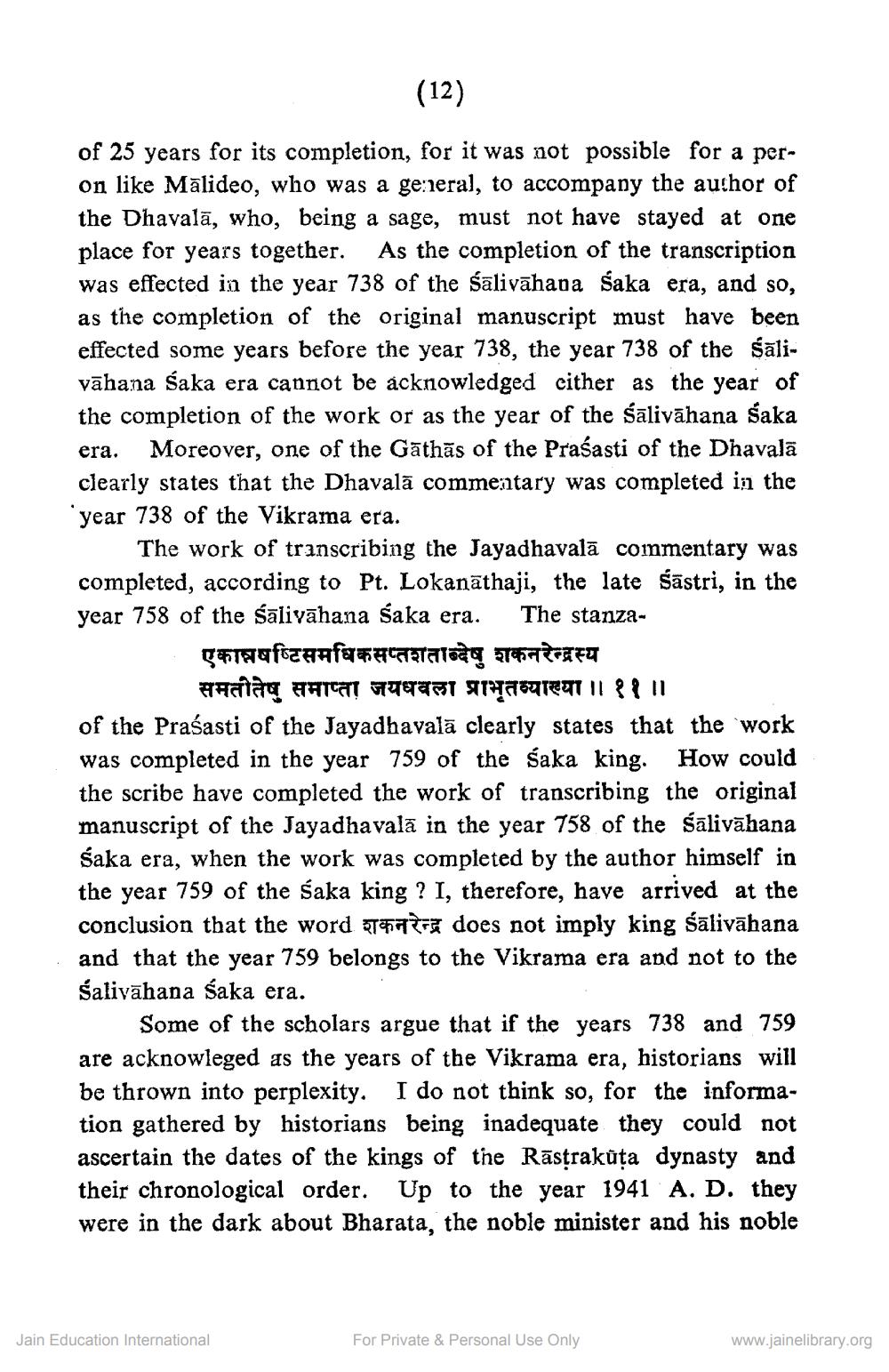________________
(12)
of 25 years for its completion, for it was not possible for a peron like Malideo, who was a general, to accompany the author of the Dhavala, who, being a sage, must not have stayed at one place for years together. As the completion of the transcription was effected in the year 738 of the Salivahana Saka era, and so, as the completion of the original manuscript must have been effected some years before the year 738, the year 738 of the $ālivāhana Śaka era cannot be acknowledged either as the year of the completion of the work or as the year of the Salivahana Saka Moreover, one of the Gathas of the Prasasti of the Dhavala clearly states that the Dhavala commentary was completed in the year 738 of the Vikrama era.
era.
The work of transcribing the Jayadhavala commentary was completed, according to Pt. Lokanathaji, the late Sastri, in the year 758 of the Salivahana Saka era. The stanza
एकान्तषष्टिसमधिकसप्तशताब्देषु शकनरेन्द्रस्य
समतीतेषु समाप्ता जयधवला प्राभृतव्याख्या ।। ११ ।।
of the Prasasti of the Jayadhavala clearly states that the work was completed in the year 759 of the Saka king. How could the scribe have completed the work of transcribing the original manuscript of the Jayadhavala in the year 758 of the Salivahana Śaka era, when the work was completed by the author himself in the year 759 of the Saka king? I, therefore, have arrived at the conclusion that the word does not imply king śālivāhana and that the year 759 belongs to the Vikrama era and not to the Salivahana Saka era.
Some of the scholars argue that if the years 738 and 759 are acknowleged as the years of the Vikrama era, historians will be thrown into perplexity. I do not think so, for the information gathered by historians being inadequate they could not ascertain the dates of the kings of the Rasṭrakūta dynasty and their chronological order. Up to the year 1941 A. D. they were in the dark about Bharata, the noble minister and his noble
Jain Education International
For Private & Personal Use Only
www.jainelibrary.org




